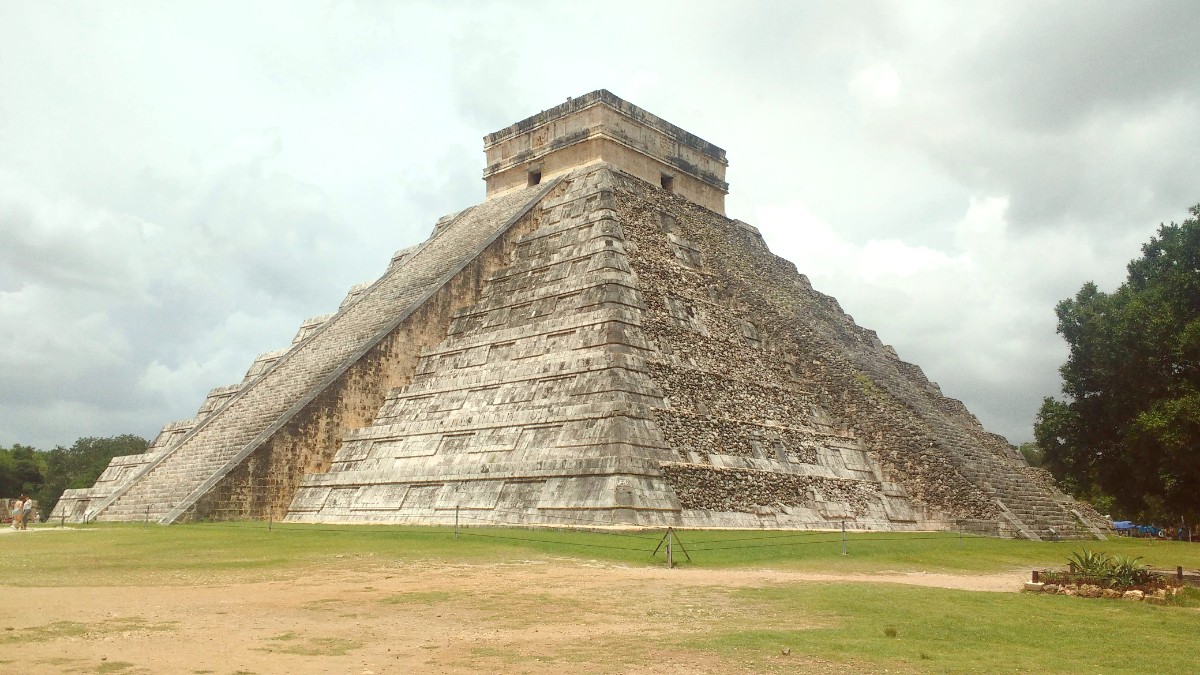
Guatemala
Tikal features iconic pyramids and sprawling complexes. Temple I, the Temple of the Great Jaguar, stands 47 meters tall. Temple II, the Temple of the Masks, rises 38 meters. Temple IV, the Temple of the Two-Headed Serpent, is the tallest structure at 64.6 meters, offering panoramic views. The Great Plaza serves as the ceremonial heart, flanked by North and Central Acropolises.
The Lost World Complex, dating to the Preclassic period, is another significant area with its Great Pyramid. Plaza of the Seven Temples and twin-pyramid complexes (Group Q and R) represent unique architectural features specific to Tikal.
These tips will aid you in making the most of your visit to Tikal's grand archaeological park.
A significant Maya city on Lake Yaxhá, less crowded than Tikal with impressive structures and lake/jungle views. A rewarding day trip from Flores.
North of Tikal, known for its astronomical observatory. Insights into Maya astronomy and urban planning. Often part of a Tikal tour or separate half-day trip.
The entire Tikal archaeological zone functions as a historical district. Its architecture represents the Classic Maya period, defined by monumental limestone structures and intricate carvings.
Temples served as sacred spaces for Maya rituals and royal burials. Stelae and altars record historical events and commemorate rulers, acting as ancient records.
Evidence of Tikal's political and military strength can be seen in its fortifications and the volume of construction, showing an organized society.
Tikal National Park is a protected natural area, part of the Maya Biosphere Reserve. It constitutes a dense jungle ecosystem, preserving vast tracts of tropical rainforest and its biodiversity.
The entire Tikal National Park is a wildlife sanctuary. Forest paths, especially early morning or late afternoon, are prime for spotting animals.
Look for spider monkeys and howler monkeys (whose roars echo), colorful toucans, coatis (raccoon-like), agoutis, and a wide variety of bird species.
Jaguars, pumas, ocelots, and tapirs are also present but are typically nocturnal and very difficult to spot.
The Petén lowlands are generally flat, with limestone karst formations. No dramatic geological features like mountains or volcanoes are nearby.
The ancient Maya skillfully managed natural water systems, creating reservoirs (aguadas) to sustain their city.
This large lake adjacent to Flores offers swimming, kayaking, and boat tours. Tikal itself is inland.
A protected natural area within the Maya Biosphere Reserve, mainly a dense jungle ecosystem focusing on biodiversity preservation.
The top of Temple IV yields the most expansive view, a sweeping vista of the dense rainforest canopy. Other pyramids also offer jungle views.
A large lake next to Flores, offering recreational activities like swimming, kayaking, and boat tours. Tikal itself is inland.
Beyond the well-known paths of Tikal, some lesser-visited areas and nearby sites offer unique experiences for exploration.
This section presents images that exemplify the beauty and history of Tikal.
Image of Temple IV at Tikal, rising above the jungle canopy, with other temples visible in the distance. Image URL: https://upload.wikimedia.org/wikipedia/commons/thumb/1/1b/Tikal_Guatemala_panoramic_temples.jpg/1024px-Tikal_Guatemala_panoramic_temples.jpg
Close-up of intricate Maya carvings on a stela at Tikal, displaying historical details. Image URL: https://upload.wikimedia.org/wikipedia/commons/thumb/c/cf/Tikal_Stela_16_Jasaw_Chan_K%27awiil_I.jpg/1024px-Tikal_Guatemala_panoramic_temples.jpg
For ticket booking for attractions, including Tikal tours, visit GetYourGuide.com. This site simplifies securing your entry.
Find various guided tours for Tikal, including sunrise and sunset options.
Browse Tikal ToursDiscover combined tours to Yaxhá and Uaxactún for a complete Maya experience.
Find Combination ToursBook boat tours on Lake Petén Itzá or other local activities around Flores.
Discover Flores ActivitiesSeek tours focusing on the broader Maya culture and history in the Petén region.
Explore Cultural ToursTikal National Park is a haven for wildlife, presenting opportunities for nature observation.
The sheer scale and engineering marvel of Tikal speak to the advanced civilization of the ancient Maya.
A visit to Tikal is a journey into ancient history and nature.
Taking a guided tour enriches the experience, offering deep insights into the Maya civilization.
Visuals that bring the historical and natural aspects of Tikal to life.
A close-up of intricate Maya carvings on a stela at Tikal, displaying historical details and artistic skill. These stone monuments narrate ancient stories.
An expansive image of Temple IV at Tikal, rising above the jungle canopy, with other temples visible in the distance. This view is iconic for sunrise and sunset.
Image URL: https://upload.wikimedia.org/wikipedia/commons/thumb/c/cf/Tikal_Stela_16_Jasaw_Chan_K%27awiil_I.jpg/1024px-Tikal_Guatemala_panoramic_temples.jpg
Consider day trips to Yaxhá for fewer crowds and beautiful lake views, or Uaxactún for its unique astronomical observatory.
Wear light, breathable clothing, and comfortable walking shoes. Humidity is a factor in the jungle environment.
Tikal is a sacred and protected site. Stay on marked paths, do not touch the ruins, and do not litter.